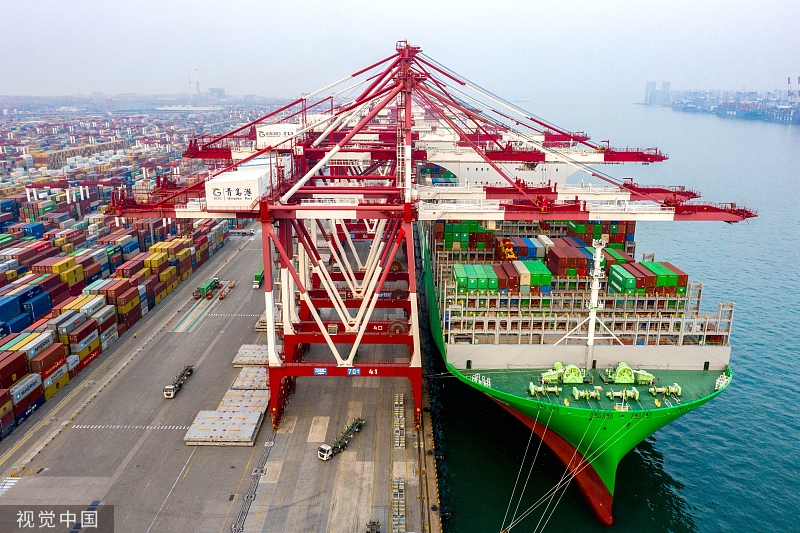LATEST INSIGHTS
Your Present Location: LATEST INSIGHTSCai Tongjuan: China's economic 'restart' expected to lead the world economy to recovery
Source: CD Published: 2023-02-06

China's economy and capital markets got off to a bright start in 2023 with Spring Festival picking up consumption, stock markets rising, the Chinese currency exchange rate appreciating and market sentiment improving. Looking forward to the whole year, with the gradual recovery of various foreign exchanges, China's economy is expected to recover to a growth rate of about 5 percent, adding impetus to the world economic recovery.
China's economic restart is not only conducive to domestic expansion and stable growth, but also is expected to drive the recovery of the world economy, offset the shadow of recession in Europe and the United States, and bring a gratifying boost to global economic growth.
Spring Festival helps pick up consumption and signals the "restart" of China's economy
This year's Spring Festival helped consumption recovered significantly, and the sales revenue of national consumption-related industries during the Spring Festival holiday increased by 12.2 percent year-on-year, especially from a month-on-month perspective. This was significantly better than the negative growth of the total social zero in December last year, therefore indicating that China's economy is "restarting".
From the perspective of structure, the consumption of goods related to home and diet increased rapidly, showing the obvious characteristics of holiday consumption. In service consumption, contact industries such as catering and tourism have improved significantly, especially this year's Spring Festival movie box office which reached 6.758 billion yuan, achieving second place in the Spring Festival box office in film history. During the Spring Festival, the number of national tourist trips reached 300 million, a year-on-year increase of 23.1 percent, and has recovered to 88.6 percent of the same period in 2019. The manufacturing PMI index returned above the boom line (50.1) in January, indicating that China's economy has stabilized and rebounded.
In the future, with the weakening of the impact of the epidemic and the promotion of the resumption of work and production, it is expected that consumption improvement will still have "staying power".
Improved market sentiment helped asset prices rise modestly
A series of favorable factors, such as the optimization and adjustment of epidemic prevention policies, the decline of the peak of the epidemic, and the further strengthening of the central government's steady growth policy, have stabilized market confidence.
At the beginning of 2023, the market benchmark index saw a rising trend, with the Wind Total A Index and Shanghai Composite Index rising by 7.4 percent and 5.4 percent respectively in January, with consumption-related sectors such as food and beverage, social services (catering), media (cinema) and real estate performing prominently, driving the recovery of upstream and downstream building materials, home appliances and other chains. The stock market started the year with outstanding performance, leading the fund and other industries to compete for the New Year's investment strategy meeting, and launched roadshows and sales competitions. Bond rates have also rebounded.
The Chinese currency exchange rate is fluctuating in both directions and gradually appreciating. With efforts from the policy to stabilize the economy and the gradual stabilization of the real estate market, major international institutions as United Nations and IMF have raised China's economic growth forecasts. The international capital market is optimistic about the rise in RMB asset prices this year, which is conducive to attracting more foreign capital inflows.
China's economic recovery will add impetus to regional and global economic growth
China's economic growth has an important and large impact on many countries in East Asia and even in the Asia-Pacific region. China's economic recovery will support the growth of the entire region through RCEP, the "Belt and Road" Initiative and other agreement platforms.
Since RCEP came into effect, it has achieved positive results in driving the trade and investment of member countries to resist the growth of the epidemic, driving the total import and export volume between China and other RCEP members to increase by 7. 5 percent year-on-year. China's non-financial direct investment to other RCEP members increased by 18.9 percent and the direct investment absorbed by them increased by 23. 1 percent.
In 2022, the scale of trade between China and countries along the "Belt and Road" reached a record high, and the trade volume of goods increased by 19.4 percent year-on-year. China's two-way investment with countries involved in the Belt and Road Initiative has also reached a new level, with China's non-financial direct investment in countries involved in the Belt and Road Initiative and actual investment in China from countries along the Belt and Road Initiative increasing by 7.7 percent and 17.2 percent respectively year-on-year.
The restart, recovery and continuous growth of China's economy will provide incremental growth in global consumption and production, boost global trade and investment growth, generate a positive chain reaction around the world through the transmission of global supply chains, resist the continued downside risks of the global economy caused by the weak European economy and the impending recession in the United States, and inject impetus into world economic recovery.
Cai Tongjuan is a researcher with Chongyang Institute for Financial Studies, Renmin University of China.























































































 京公网安备 11010802037854号
京公网安备 11010802037854号





